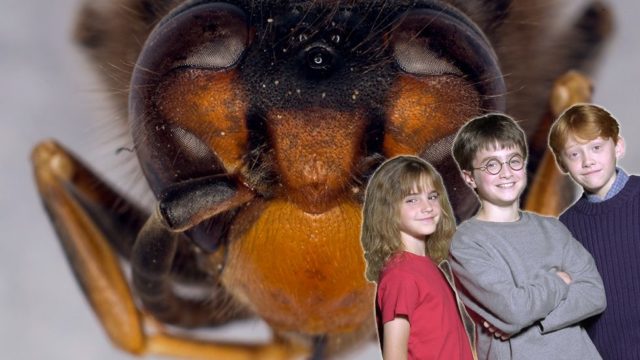
It is not often that a wasp makes it into the news, but this is exactly what has happened. When a new wasp species was discovered by a biologist from New Zealand, he decided to use the name he gave it to clean up the image of wasps and opted to name it after of the Harry Potter villains- Lucius Malfoy, who is the arch-enemy of Harry Potter in the series of novels and the movies.
One of an estimated 3,000 insects found in New Zealand, Lusius Malfoyi is a non-stinging variety of wasp. It was discovered by Tom Saunders who is a researcher form the University of Auckland. He says that wasps are often seen as the villains of the insect world, despite the fact that most are either neutral or even beneficial from a human point of view.
Saunders read his first Harry Potter book when he was ten years old. The link between the negative view of wasps and the villains in the Harry Potter books was what inspired him to name the newly found species Lusius Malfoyi. He said that the storyline where Lucius Malfoy is forgiven after he had separated from the allies of Voldemort had made him think that perhaps humans may also pardon wasps and look at them in a different light. He wants everyone to start seeing them as interesting and important creatures.
Lucius Malfoy is the father of Draco in the Harry Potter series of books that are written by J.K. Rowling. The author has depicted this character as an evil figure. It is Lucius who is responsible for opening the Chamber of Secrets in the second book of the series. The Chamber of Secrets is where the deadly Basilisk is held captive and once the chamber is opened, everyone at Hogwarts School of Witchcraft and Wizardry is at risk.
In the later books, Malfoy is one of the chief supporters of Voldemort and he is trying to have Albus Dumbledore, the headmaster of Hogwarts, removed from his position. As an enemy of Voldemort and a supporter of Albus Dumbledore, Harry Potter faces many battles with his arch-enemy Lucius Malfoy throughout the series. In the final book, Malfoy defects from Voldemort to save his family and is pardoned.
Saunders has explained that he chose the name in the hope that it would spark a conversation about wasps and make others think about the relationships we have with the millions of species with which we share the planet. He wants to draw people’s attention to the various species of insect that New Zealand could potentially lose. He is supported in this by the Centre for Biodiversity and Biosecurity at the University of Auckland.
He points out that although there are many different species of reptiles, mammals, birds, amphibians, and fish; there are even more species of parasitoid wasps than all of these put together. Saunders also explained why these insects are useful as wasps are used around the globe for pest control. Without them, it would take a lot more pesticides and money to combat the problem of pests.
Currently, approximately 30,000 species of wasps are known to mankind. Most of these are solitary, non-stinging creatures and do more good than harm. The new species of wasp discovered by Saunders is an example of this as it neither lives in colonies nor stings.
The main problem, according to Saunders, is a lack of resources to learn more about wasps. Scientists do not have enough data to be fully aware of the number of species or what their host species are. This is preventing scientists from protecting wasps and including them in conservation planning programs.
One thing that Saunders hopes will come out of naming the wasp Lusius Malfoyi is that it will act as a ‘poster child’ and attract more interest in creatures about which mankind knows very little.
 Follow Us
Follow Us





